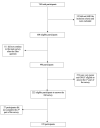The interventional radiology gender gap: perspectives from the international IR training survey
- PMID: 35616650
- PMCID: PMC10162054
- DOI: 10.1259/bjr.20210726
The interventional radiology gender gap: perspectives from the international IR training survey
Abstract
Objective: This study sought to examine international interventional radiology (IR) training standards and perceptions. This survey aims to identify gender-based barriers and inequities effecting uptake, retention and experience of trainees in IR.
Methods: An anonymous survey was created using Survey Monkey and distributed as a single-use weblink via eight IR national and international societies around the world. Data analysis was conducted to highlight gender-specific trends and identify any differences.
Results: Motivation factors given for following a career in IR revealed gender differences in factors such as mentoring (8.7 F vs 21.6% M) and influence from senior colleagues (15.2 F vs 25.0% M). The overwhelming majority across both genders (82.6 F vs 81.3% M) agreed or strongly agreed that early exposure to IR training at Year 1 had a positive impact on career choice. A good work life balance was positively reported in 48.2% of female respondents compared to 45.2% in males. There were no significant differences in satisfaction with the various aspects of IR training. All differences observed between genders, exceeded the 0.05 significance level.
Conclusion: This survey offers many insights into the current international landscape of IR training. Ongoing evaluation is vital to inform recruitment practices and initiatives to bridge gender inequities and attract more females into IR.
Advances in knowledge: This study has revealed that increasing and optimising mentoring opportunities may be the first step in increasing awareness of IR and maximising potential female recruits.
Figures







References
-
- Board of the faculty of clinical radiology . Clinical radiology UK workforce census 2020 report. R Coll Radiol 2020.
-
- Elston MA, ed. Women and medicine: the future: a report prepared on behalf of the Royal College of Physicians. Royal College of Physicians; 2009.
-
- European Society of Radiology (ESR), Cardiovascular and Interventional Radiological Society of Europe (CIRSE) . Interventional radiology in european radiology departments: a joint survey from the european society of radiology (ESR) and the cardiovascular and interventional radiological society of europe (CIRSE). Insights Imaging 2019; 10: 1–9. doi: 10.1186/s13244-019-0698-6 - DOI - PMC - PubMed
MeSH terms
LinkOut - more resources
Full Text Sources
Miscellaneous

